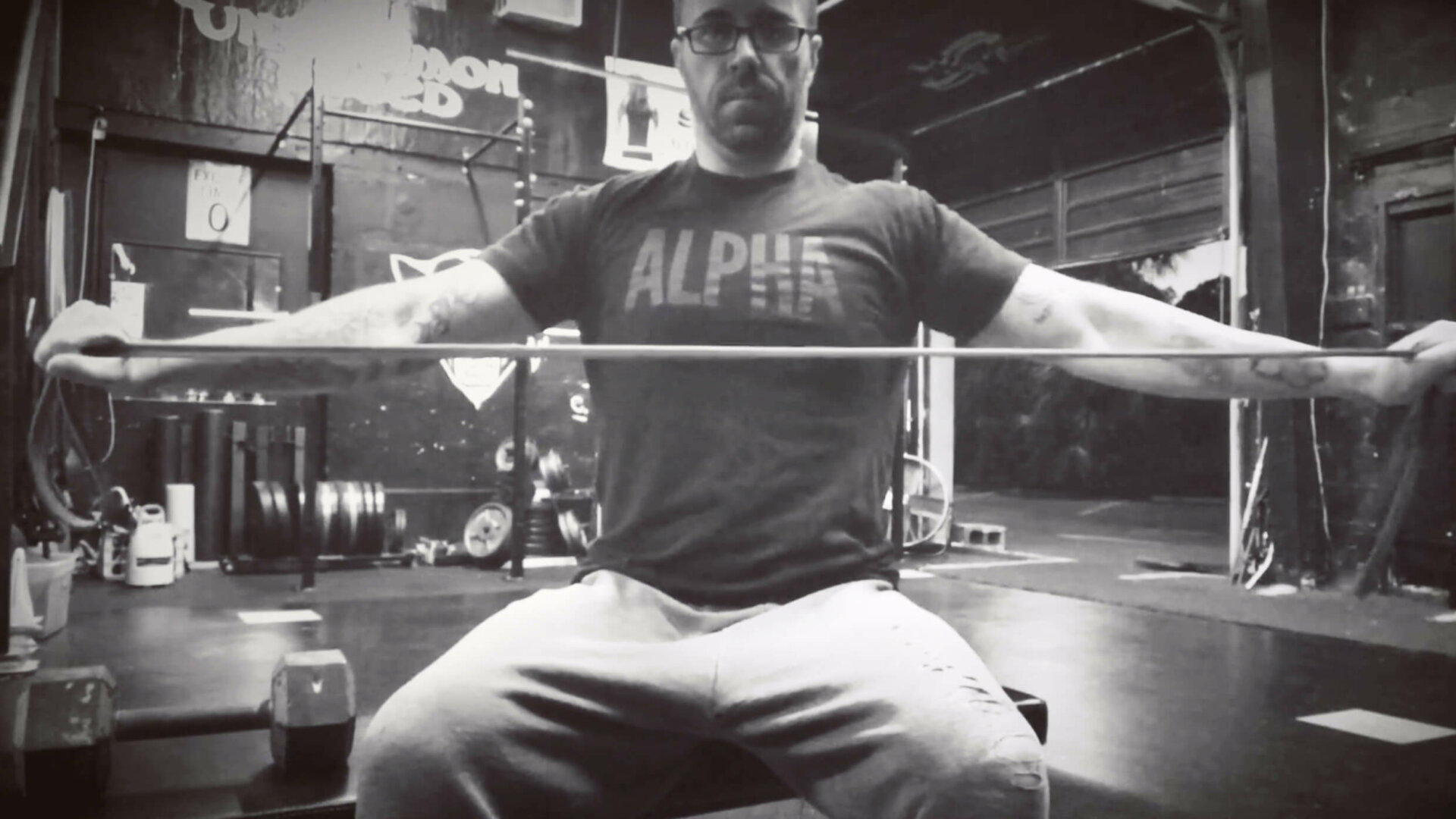T-Spine Extension
Aside from back problems later in life, if you have less than adequate thoracic spine mobility your ability to rotate your scapula upward and flex your shoulder will be limited. One of the things you can work on first is your t-Spine extension. Note that in the video I am not using a lot of weight. Depending on your strength levels, if you have been training a while you can get away with doing upwards of 95lbs on this if it doesn’t put any undue stress on your spine. A good starting point is always the empty bar, just to see how it feels, and move up from there as needed. You also want to flex your glutes a bit and tighten your abs to keep anything else from moving. Focus on just your upper back for this. At the end of the movement, you want to stand nice and tall.
Upward rotation
The video demonstrates an upward shrug with a barbell. You’ll notice that I have a bent elbow, and my humerus isn’t straight. My reason for performing it this way is that it allows me to feel the rotation happening as I do it, compared to using a straight arm. A simple cue is to imagine that you are trying to move your shoulder behind your ear. Give it a shot using a lighter weight so that you can work your rotators and work it through a full range of motion. If you can’t move it at a full range, lower the weight or keep practicing in the range of motion in which you can move.
Wall Slide
This video of a wall slide has you working both your t-spine and your upward scapula rotation. This is an exceptional drill and I like it because it helps me in a few important ways
- You can feel the scapulae rotating upward
- You have to be mindful of your lumbar positioning
- You have to extend the t-spine to keep your back against the wall
Downward Rotation
In this video, we’re doing an overhead band pull-apart. Perform these at a lower tempo to feel the downward movement of your shoulder blades, and keep the band close to you. In addition to that, keep your scapulae depressed (activate your lats) with a bit of retraction. Once you have the position there, imagine you are ripping the band in two and trying to reach the side walls.
Protraction
Always “down and back” with our cues, we spend so much time in this position, that it’s easy to lose the ability or the inclination to move the shoulder blades forward. The push-up plus is an excellent way to work the serratus anterior, the muscles responsible for scapular protraction.
Retraction
Last, we come to scapular retraction. If you look at the video, we’re doing some horizontal band pull-aparts. If you’re new to this, you can reset your starting position every rep. Once you practice more, keep your shoulder blades depressed and squeezed and move only the humerus. For added effect, hold the position for a second or two. The cue is going to be like before—reach out to the side walls as you pull the band in two.
For more about these drills, check out Six Drills for Better Shoulders


